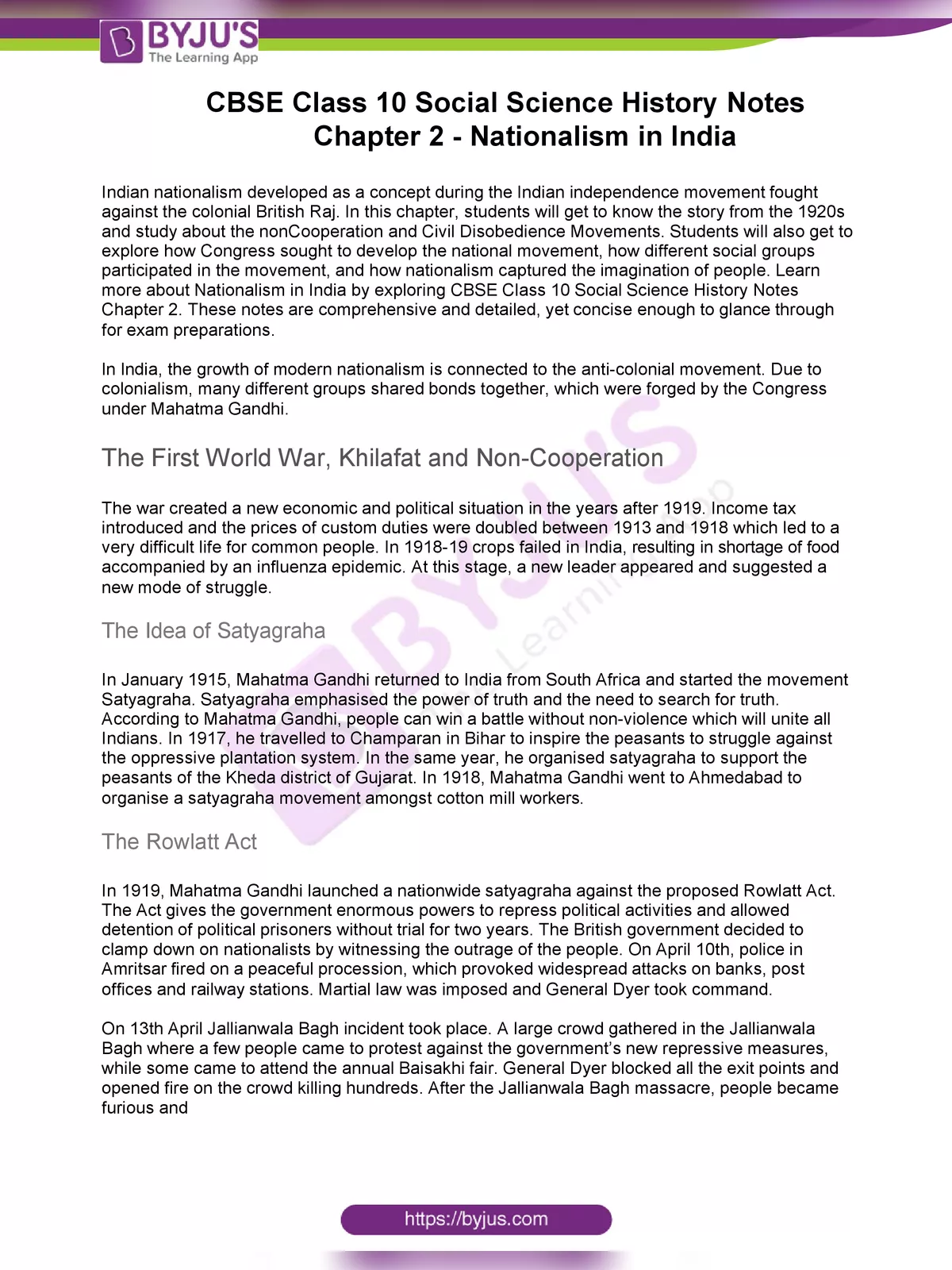Nationalism in India Class 10 - Summary
Nationalism in India is a key topic for Class 10 students, emerging during the Indian independence movement that sought freedom from colonial British rule. In this chapter, students will discover the exciting events of the 1920s, focusing on the Non-Cooperation and Civil Disobedience Movements.
Understanding Nationalism in India for Class 10
Students will learn how the Indian National Congress aimed to promote the national movement. They will explore the diverse involvement of various social groups and understand how the idea of nationalism inspired many individuals across the country. For a comprehensive study, you can check the CBSE Class 10 Social Science History Notes for Chapter 2. These notes are detailed yet concise, making them perfect for quick revision before exams.
Nationalism in India Class 10 Overview
The idea of Indian nationalism gained strength during the struggle against British colonialism. It represents a type of territorial nationalism that unites all people of India, irrespective of their different ethnic, linguistic, and religious backgrounds. This spirit of unity is still a vital force in Indian politics today, standing strong against sectarian movements related to Hindu and Muslim nationalism.
Nationalism in India Class 10 Notes
In this chapter, students will explore the important historical events from the 1920s, including the Non-Cooperation and Civil Disobedience Movements, which were crucial in shaping modern nationalism. They will understand how the Congress party worked to unite the ongoing national movement, recognize the active role of different community groups, and see how the idea of nationalism inspired many individuals during this period. For a thorough study, refer to the CBSE Class 10 History Notes for Chapter 2, which are structured for effective exam preparation.
Nationalism in India – Detailed Insights on Key Events
The development of modern nationalism in India is closely connected to the anti-colonial struggle. During the colonial era, shared issues brought together various groups, especially under Mahatma Gandhi’s leadership.
The aftermath of the First World War (1914-1918) brought big changes, resulting in new economic challenges. During this time, the British imposed income tax and increased custom duties, causing great trouble for ordinary citizens. Crop failures in 1918-19 worsened food shortages, worsened by an influenza epidemic. This chaos led to the rise of a new leader who encouraged a fresh approach to resistance.
The Idea of Satyagraha
In January 1915, Mahatma Gandhi returned to India from South Africa and started the Satyagraha movement. This movement highlighted the power of truth and the importance of its pursuit. Gandhi believed that non-violent action could unite Indians and help them overcome injustices. He began his activism in Champaran, Bihar, in 1917, encouraging farmers to fight against unfair practices in plantations. That same year, he organized a Satyagraha in Kheda, Gujarat, to support local farmers facing hardships. In 1918, he led a Satyagraha for the cotton mill workers in Ahmedabad.
The Rowlatt Act
In 1919, Gandhi initiated a nationwide Satyagraha against the proposed Rowlatt Act. This law gave the government extensive powers to shut down political dissent and allowed for the detention of individuals without trial for two years. Tensions grew, leading to a tragic event on April 10th when the police in Amritsar opened fire on peaceful protesters, sparking widespread anger against government institutions.
On April 13th, the infamous Jallianwala Bagh incident occurred. A large crowd had gathered at the site, some attending a fair while others protested against the government’s oppressive actions. General Dyer blocked all exits and ordered his troops to shoot, resulting in numerous deaths and injuries. This horrific massacre fueled public outrage, leading to strikes and violent confrontations with the police. Eventually, Gandhi had to suspend the movement as it spiraled into chaos.
You can download the Nationalism in India Class 10 PDF using the link given below.
